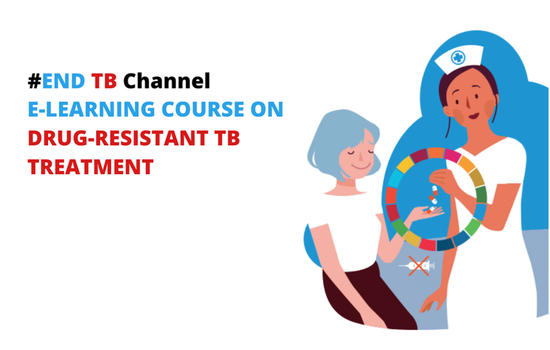
This e-course will guide you through the essentials of latest existing WHO guidelines and policy recommendations on drug-resistant TB. You will also learn more about the rationale behind the WHO recommendations for the management of DR-TB, implementation considerations for different regimens for eligible patient groups, adjunctive treatment, the active TB drug safety monitoring and management framework, and the analysis and interpretation of performance indicators.
The main focus of the e-course is programmatic; clinical aspects are only discussed when relevant to specific topics.
Язык: English
Advanced (Avancé), Tuberculosis
Информация о курсе
This e-learning course was developed by WHO. It is a comprehensive, self-paced online course that follows the content of the WHO operational handbook on tuberculosis. Module 4: drug-resistant tuberculosis treatment.
Course duration: 5 to 6 hours
Certificates: Participants with an 80% score or more on the final assessment can download a Record of Achievement. Participants who receive a Record of Achievement can also download an Open Badge for this course. Click here to learn how.
© World Health Organization 2021. All rights reserved. This e-learning training was developed by the World Health Organization (WHO). It is intended to be used as a self-learning course on latest existing WHO guidelines and policy recommendations on drug-resistant TB. All reasonable precautions have been taken by WHO to verify the information contained in this e-learning training. However, the e-learning training is being distributed without warranty of any kind, either expressed or implied. The responsibility for the interpretation and use of the e-learning training lies with the reader. In no event shall WHO be liable for damages arising from its use. The designations employed and the presentation of the material in this publication do not imply the expression of any opinion whatsoever on the part of WHO concerning the legal status of any country, territory, city or area or of its authorities, or concerning the delimitation of its frontiers or boundaries. Dotted and dashed lines on maps represent approximate border lines for which there may not yet be full agreement. The mention of specific companies or of certain manufacturers’ products does not imply that they are endorsed or recommended by the World Health Organization in preference to others of a similar nature that are not mentioned. Errors and omissions excepted, the names of proprietary products are distinguished by initial capital letters.
Что вы узнаете
- select the appropriate treatment regimen for drug-resistant TB (shorter or longer) for eligible patient groups, taking into consideration the needs of various subgroups, the country context, epidemiological background, patient’s history and results of drug-susceptibility testing;
- explain the implementation considerations for different regimens for eligible patient groups, adjunctive treatment and the active TB drug safety monitoring and management framework (known as aDSM);
- analyse and interpret key indicators of drug-resistant TB and explain how to assess the effectiveness of treatment of drug-resistant TB through cohort analysis.
Для кого предназначен этот курс
- This e-learning course is intended for persons who provide guidance to countries on the uptake of WHO guidelines; for example managers of national tuberculosis (TB) programmes, technical staff at ministries of health, WHO staff, staff of technical agencies, consultants and anyone supporting countries and major subnational units in the development and implementation of drug-resistant TB policies and guidelines. It is assumed that you have experience working on TB and are familiar with WHO TB guidelines.
Записаться на этот курс
Требования для получения сертификата
- Чтобы получить сертификат об окончании курса, участникам необходимо набрать не менее 80% от максимального количества баллов за все задания на оценку.
- Gain an Open Badge by completing the course.